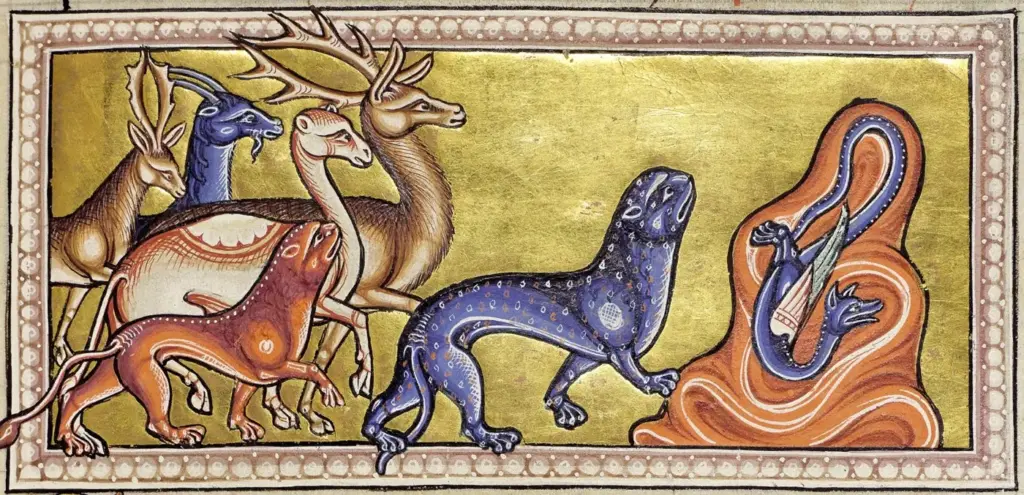
"For thou­sands of years, ordi­nary peo­ple all over the world not only worked side-by-side with domes­tic ani­mals on a dai­ly basis, they also observed the wild fau­na around them to learn how to nav­i­gate and sur­vive nature. The close­ness pro­duced a keen appre­ci­a­tion for ani­mal behav­ior that informs the folk tales of every con­ti­nent and the pop­u­lar texts of every reli­gion. Our delight in ani­mal sto­ries sur­vives in children's books, but in grown-up lan­guage, ani­mal com­par­isons tend to be nasty and dehu­man­iz­ing. The demean­ing adjec­tive "bes­tial" con­veys a typ­i­cal atti­tude not only toward peo­ple we don't like, but toward the ani­mal world as well."
"Orwell's Ani­mal Farm and Kafka's Meta­mor­pho­sis have become the stan­dard ref­er­ences for mod­ern ani­mal alle­go­ry. Ear­ly lit­er­a­ture shows us a range of dif­fer­ent atti­tudes, where ani­mals are treat­ed as equals, with char­ac­ter traits both good and bad, or as noble mes­sen­gers of a god or gods rather than live­stock, mov­ing scenery, or exploitable resources. We might refer in an east­ern con­text to the Jata­ka Tales, fables of the Buddha's many rebirths in the human and ani­mal worlds that pro­vide their read­ers with moral lessons."
For thousands of years ordinary people worked alongside domestic animals and observed wild fauna to learn navigation and survival. Close contact produced a detailed appreciation of animal behavior that informed folk tales across continents and religious texts. Animal stories persist in children's books, while adult language often uses animal comparisons to demean people. The adjective "bestial" encapsulates a negative attitude toward both disliked people and animals. Early literature portrays animals as equals, moral exemplars, or divine messengers rather than mere resources. Eastern Jataka Tales and medieval Christian bestiaries provided moral typologies through readings of the natural world.
Read at Open Culture
Unable to calculate read time
Collection
[
|
...
]